That's what happened yesterday evening, to one of Steph's coworkers. A young gray fox was trying to cross Lakeshore Boulevard in Marquette – a slow, 25-mph stretch of road right in town – and it was obviously terrified and confused. She ushered it across the street, then continued on her way. When she returned, it was dead. Steph alerted me – it was a drop-everything-and-go sort of alert – and within minutes I was in town. The body was still warm when I arrived.
When I lived downstate, red foxes (Vulpes vulpes) were a far more common sight – alive as well as dead along the roadside. Here, however, gray foxes (Urocyon cinereoargenteus) seem to be more numerous. Sadly, they're hit quite often, as I've seen their bodies both in town and along the highway. I do see living gray foxes from time to time, though – there's one in our neighborhood, and occasionally I'll glimpse her trotting past our house in the morning. They're gorgeous creatures; the gray part of the name is a bit of a misnomer, because they're quite orange, too.
Gray foxes are a bizarre, unique animal, and I've always thought of them to be more primitive than other canids. Certainly, they are nothing like the domestic dog. In life, gray foxes are catlike when they walk; their muzzles are quite short, and their pupils become slits when they contract. Gray foxes also possess the amazing ability to climb trees. Here is a great video demonstrating this incredible skill. I did notice that this fox's claws were very sharp, just as sharp as those of a cat – likely to aid in vertical climbing.
What truly gave away this fox's age, however, were its teeth. Many baby teeth were still present, although a few adult canines could be seen poking through the gums. As the blood and misaligned jaws in this photograph depict, the fox was struck in the head and likely died instantly.
A juvenile gray fox, however, was not the only young animal that I photographed yesterday. In the morning, Steph had alerted me to a few dead skunks along M-28, so I drove east to check them out. I passed plenty of turkeys, both toms and hens, feeding along the roadside, which I should have taken as a sign; I didn't end up photographing the skunks, and instead, I pulled over to check out a bird on the shoulder of the highway. It was a fledgling turkey, and not far from it was its mother, also dead.
Both turkeys had only just been hit; they had only just been scavenged, as well. The corpses were still warm, and their body cavities were devoured completely.
The fledgling turkey had been in an awkward stage of plumage when it died. Baby feathers remained in most places, while adult feathers were growing in on its tail and wings. None of the feathers had an iridescent shine; they were still mottled and brown, perfect camouflage for a young bird.
What surprised me the most was the relative size of the turkey's feet to its head. Turkey feet are huge! They have to be, for a bird that spends most of its time walking.
It's both ridiculous and dismaying to imagine a fox getting hit on a 25-mph stretch of residential road, or a turkey family getting plowed over, likely when taking a slow stroll across the highway. Right now, many young animals – especially skunks, raccoons, and foxes – are getting hit by cars as they wander away from their mothers and dens. It's a time to be cautious when driving, and to remember that young animals, so unsure and curious in this big world, can be very unpredictable.

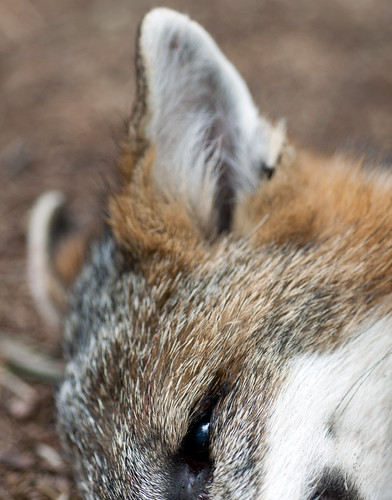
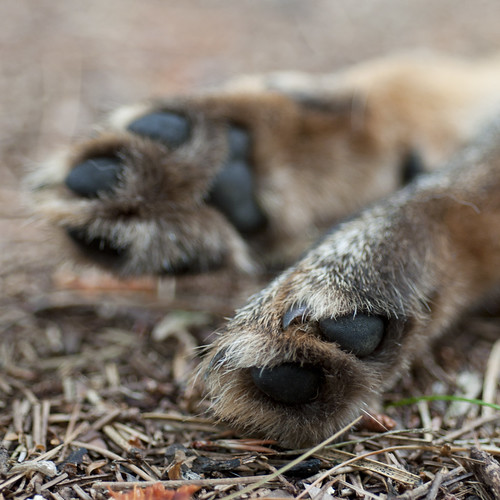
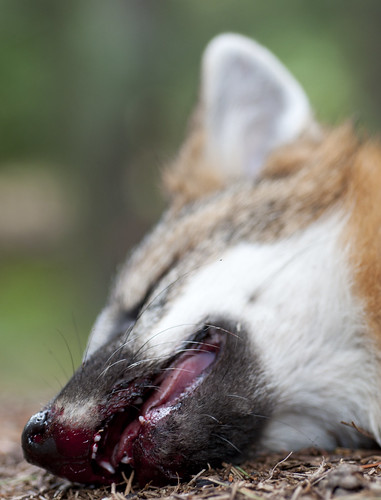
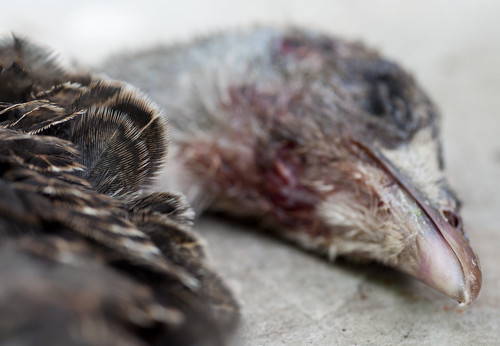
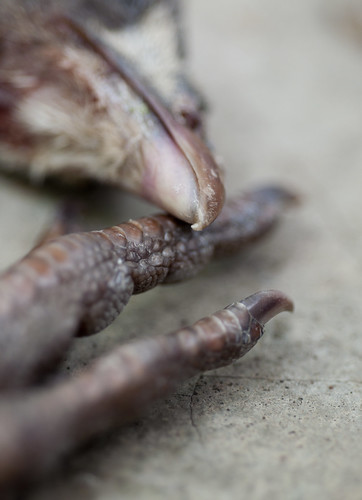



Great post, Jorie. You write and photograph so very well.
ReplyDelete